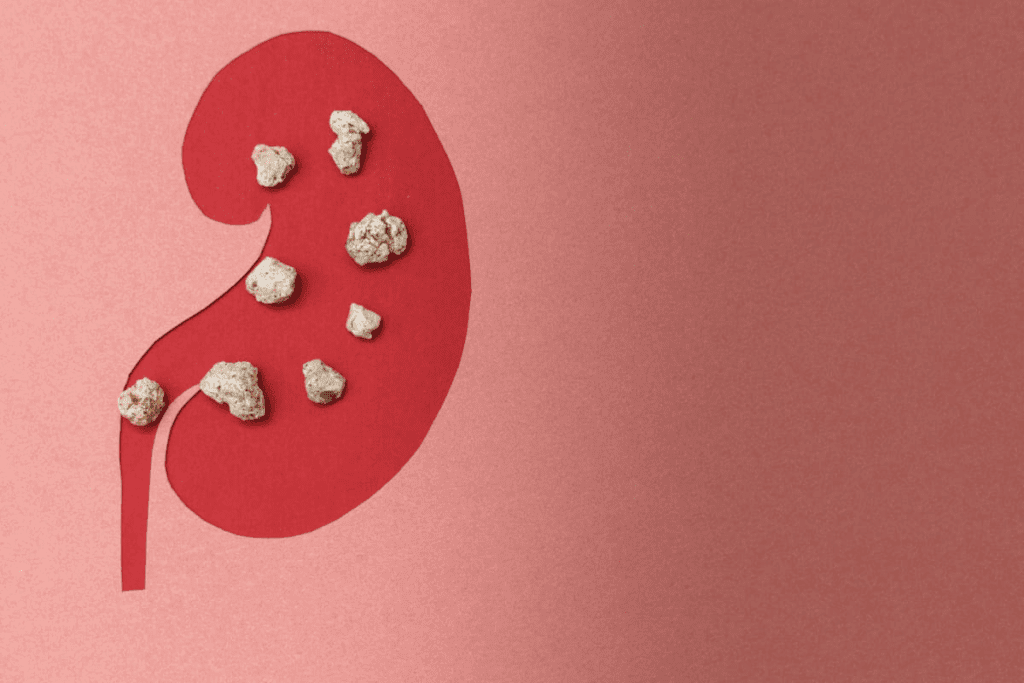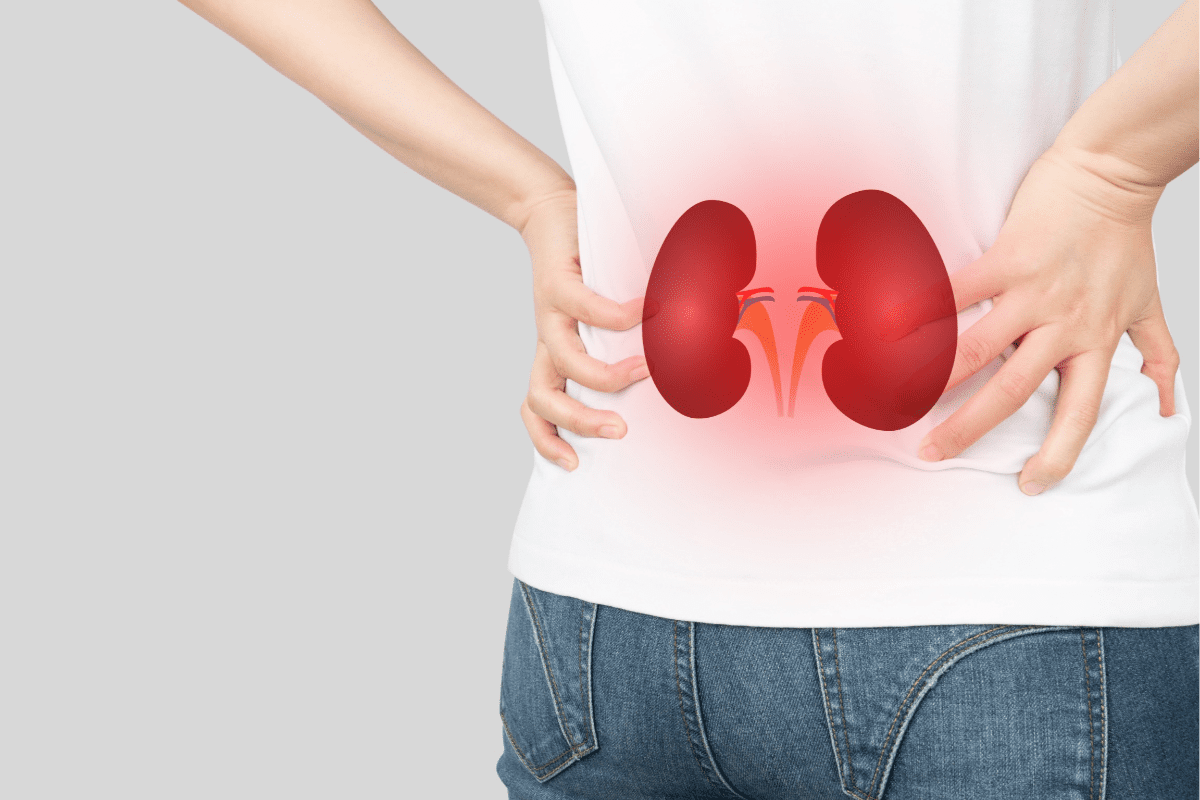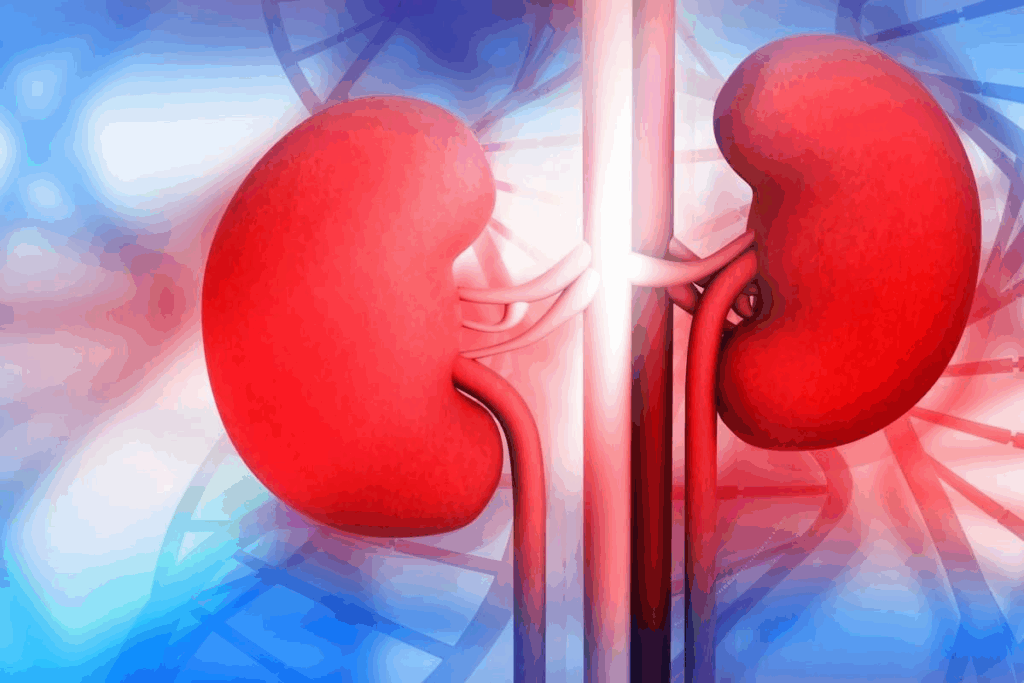Last Updated on October 31, 2025 by Bilal Hasdemir

Calcium oxalate kidney stones are a big health problem, affecting millions. They cause a lot of pain and discomfort. Passing a kidney stone is very painful, and studies show that 50 to 75 percent of people will get them again without prevention.
Learn the kidney stone color meaning. What does the color of your stone—white, yellow, brown, or black—indicate about its composition?
At Liv Hospital, we help international patients a lot. We focus on preventing calcium oxalate stones. We want to help those at risk by explaining why they happen, who’s at risk, and how to stop them.

It’s important to understand calcium oxalate stones to prevent them. Knowing what they are and how they form helps us find better ways to stop them.
Calcium oxalate stones are the most common type of kidney stone. They are made of calcium oxalate. Things like diet, vitamin D, and surgery can make urine more likely to form stones.
These stones are common and often come back. People who have had one are more likely to get another. Recent studies show that prevention plans should be based on each person’s urine analysis, not just general diets. This makes prevention more effective.
Knowing how common and recurring these stones are shows we need to act early. By figuring out what causes stones in each person, we can make better prevention plans.

It’s important to know how black kidney stones look in urine. This helps doctors figure out what kind of stone it is and how to treat it. Kidney stones can look very different, and black ones are no different.
Black kidney stones can happen for a few reasons. Sometimes, it’s because of certain compounds or other substances getting mixed in. Calcium oxalate monohydrate stones often look darker. Other things, like urochrome, can also make them appear black.
Finding black stones in urine takes a doctor’s check-up and lab tests. If someone passes a stone, it’s good to save it for the doctor. Doctors use tools like infrared spectroscopy or X-ray diffraction to find out what the stone is made of.
Stone Composition | Common Characteristics | Clinical Significance |
Calcium Oxalate Monohydrate | Often appears black or dark brown | Associated with high oxalate intake or certain metabolic disorders |
Uric Acid Stones | Typically yellow or brown | Linked to low urine pH and conditions like gout |
Cystine Stones | Often appear as yellow or pink stones | Associated with cystinuria, a genetic disorder |
Knowing why black kidney stones happen helps doctors plan better treatments. This way, they can stop more stones from forming and take better care of their patients.
It’s important to know how calcium oxalate stones form to prevent them. The process involves many steps, including diet, hydration, and health conditions.
The first step is crystal nucleation, where tiny crystals form in the urine. These crystals grow and stick together, forming a stone. This happens when the urine has too much calcium and oxalate.
Supersaturation happens when there’s too much of these ions in the urine. Dehydration, diet, and some health issues can cause this. It raises the risk of stone formation.
Several things in the urine affect stone formation. These include the levels of calcium and oxalate, urine pH, and substances that help or hinder crystallization.
Knowing these factors helps us find ways to stop stones from forming. We can change our diet, drink more water, and use medicines that change urine chemistry.
Calcium oxalate kidney stones are caused by genetics, medical conditions, and diet. Knowing these factors helps in preventing stones.
Genetics play a big role in getting kidney stones. If your family has a history of stones, you might get them too. Studies show that genes can affect how your body handles calcium and oxalate, raising your risk.
Family History: Having parents with kidney stones means you’re at higher risk.
Some medical conditions raise your risk of getting calcium oxalate kidney stones. These include:
These conditions can change the balance of minerals in your urine. This makes it more likely for stones to form.
Your diet is key in preventing kidney stones. Some foods and habits can increase your risk:
Changing your diet can help lower your risk. For example, eating enough calcium can reduce oxalate absorption.
Dietary Factor | Effect on Stone Risk |
High Oxalate Intake | Increases risk |
Low Calcium Intake | Increases risk |
High Sodium Intake | Increases risk |
Adequate Fluid Intake | Decreases risk |
By knowing and tackling these risk factors, you can prevent calcium oxalate kidney stones.
It’s important to know the signs and how to test for calcium oxalate kidney stones. Doctors use a mix of checking the patient, looking at their history, and running special tests to find these stones.
Calcium oxalate kidney stones can cause a lot of pain. You might feel:
These signs might mean you have a kidney stone. But, only a test can confirm it.
There are many tests to find out if you have calcium oxalate kidney stones. These include:
A 24-hour urine test is key to understanding why you might get calcium oxalate stones. It collects your urine for 24 hours to check:
Recent studies show how important this test is. It helps doctors find what makes stones more likely to come back. This way, they can make a plan to stop them from happening again.
By using tests like the 24-hour urine analysis, doctors can find and treat calcium oxalate kidney stones. This helps lower the chance of them coming back and makes patients feel better.
Changing what you eat is key to stopping calcium oxalate stones. Eating right can cut down your risk of getting these stones.
Calcium is a big deal when it comes to preventing these stones. It might seem odd, but enough calcium is good. A big study showed that eating enough calcium, less sodium, and animal protein can lower stone risk by 51 percent.
Too little or too much calcium can lead to stones. The goal is to get it just right.
Keeping an eye on oxalate is also important. Foods like:
You don’t have to cut these foods out completely. Just watch how much you eat. Eating them with foods high in calcium can help too.
Too much sodium can raise calcium in your urine, upping stone risk. Stay under 2,300 milligrams of sodium a day. You can do this by:
Eating too much animal protein can also raise stone risk. Keep animal protein in check and choose plant-based options. A mix of protein sources can help.
By knowing and using these diet tips, you can lower your chance of getting calcium oxalate stones. It’s all about making smart food choices and eating well.
Drinking enough water is key to avoiding kidney stones. We’ll look at how to stay hydrated to prevent stones. Drinking water helps dilute urine, making it less likely for stones to form.
It’s important to drink lots of water to prevent kidney stones. Aim for 10-12 cups (2.5-3 liters) a day. This keeps urine flowing well, which helps prevent stones.
It’s not just about how much you drink. Spacing out fluid intake helps keep urine production steady. This reduces stone risk.
Water is the top choice for staying hydrated. But, other fluids can also help. Citrate-rich beverages, like orange juice, are good because they help prevent some stones.
Try to avoid sugary drinks and those high in fructose. They might increase stone risk. Also, too much caffeine can lead to dehydration if not balanced with water.
When you drink fluids matters as much as how much. Drinking throughout the day and before bedtime helps keep urine flowing while you sleep. This lowers stone risk.
Drink more fluids when you’re active or in hot weather. These conditions make you sweat more. Being mindful of your fluid intake can greatly lower kidney stone risk.
For those who often get calcium oxalate stones, supplements and medications can help a lot. Changing what you eat is key, but some medical steps can also help stop stones from coming back.
Citrate supplements, like potassium citrate, are often suggested to stop calcium oxalate stones. Citrate binds to calcium in urine, stopping crystals from forming. Research shows citrate can greatly lower the chance of stones coming back.
Thiazide diuretics are also used to stop calcium oxalate stones. They cut down how much calcium goes into urine, lowering stone risk. Thiazides have been proven to cut down stone coming back.
Other meds might be given to stop calcium oxalate stones too. For example, allopurinol for those with high oxalate or uric acid in urine. The right medicine depends on your risk factors and health history.
Doctors usually suggest meds for those with many stones, certain health issues, or diet changes don’t work. A doctor will look at your risk and health to pick the best prevention plan.
Knowing about supplements and medications for calcium oxalate stone prevention helps you and your doctor make a plan just for you.
To prevent kidney stones, making lifestyle changes is key. Healthy habits can lower your risk of getting calcium oxalate stones.
Keeping a healthy weight is important for your health. Being overweight can increase your risk of kidney stones. So, it’s vital to eat well and exercise regularly.
Here are some tips for managing your weight:
Weight Management Strategy | Benefits |
Balanced Diet | Provides essential nutrients and helps maintain a healthy weight |
Regular Exercise | Burns calories, improves overall health, and reduces stone risk |
Calorie Monitoring | Helps prevent excessive weight gain and reduces obesity-related risks |
Exercise is good for your weight and helps prevent kidney stones. It improves urinary health and lowers the risk of stone-forming substances in your urine.
Here are some exercise tips:
“Regular exercise is a cornerstone of a healthy lifestyle and can significantly contribute to the prevention of kidney stones.”
Too much stress can harm your health, including increasing your risk of kidney stones. Stress reduction techniques can help by making you relax and feel better overall.
Here are some ways to reduce stress:
By making these lifestyle changes, you can lower your risk of calcium oxalate kidney stones and improve your health.
Understanding the causes and prevention of calcium oxalate kidney stones is key. This knowledge helps people make a plan to lower their risk. We’ve talked about how to prevent these stones through diet, staying hydrated, and lifestyle changes.
To make a plan that works for you, look at your risk factors. You might need to watch your oxalate intake, keep calcium levels right, and drink plenty of water. Adding these steps to your daily routine can help prevent kidney stones.
Creating a plan to prevent kidney stones is all about a big picture approach. It’s about what you eat, how much water you drink, and your lifestyle. With the right choices and help from doctors, you can make a plan that fits you. This can help lower your risk of getting calcium oxalate kidney stones.
Calcium oxalate kidney stones are made mainly of calcium and oxalate. Sometimes, they also have phosphate or uric acid. Knowing what they’re made of helps in preventing them.
Some kidney stones look black because of certain substances in them. The black color usually comes from calcium oxalate monohydrate or other compounds.
Spotting black kidney stones in urine is hard because they’re small. If you see dark particles in your urine, it might be a stone. If you think you have a stone, see a doctor for help.
Several things can increase your risk of getting calcium oxalate kidney stones. These include your genes, certain health conditions, and your diet. Foods high in oxalate or low in calcium are bad for you.
To avoid calcium oxalate kidney stones, watch your oxalate intake and eat enough calcium. Also, limit sodium and animal protein. Eating well is key to preventing stones.
To prevent kidney stones, drink at least 2 liters of fluid a day. Water and other low-calorie drinks are best for keeping your urine clear.
Yes, some supplements and medications can help prevent calcium oxalate stones. Citrate supplements and thiazide diuretics are examples. Always talk to a doctor before trying new supplements or medications.
Changing your lifestyle can lower your risk of kidney stones. Stay healthy, exercise regularly, and manage stress. A healthy lifestyle helps prevent stones.
A 24-hour urine analysis is important for diagnosing and preventing kidney stones. It shows what’s in your urine and helps find risk factors. This info helps doctors create a prevention plan just for you.
Medication can help prevent calcium oxalate stones, but treatment often involves more. You might need to change your diet and lifestyle too. The best treatment plan depends on your situation.
McCullough, A. R. (2005). Sexual dysfunction after radical prostatectomy. International Journal of Impotence Research, 17(S1), S39-S44. https://pmc.ncbi.nlm.nih.gov/articles/PMC1477599/
Subscribe to our e-newsletter to stay informed about the latest innovations in the world of health and exclusive offers!
WhatsApp us